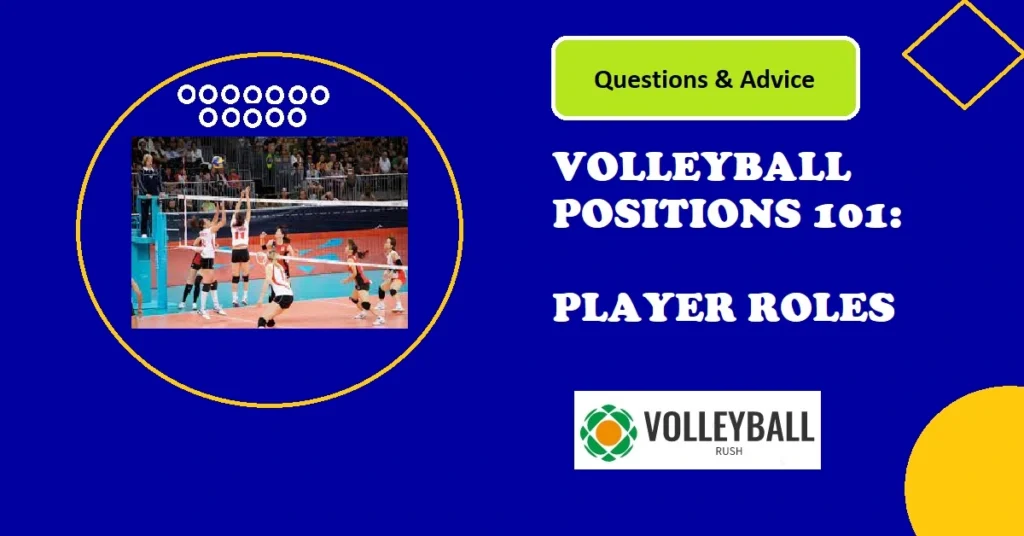How volleyball is scored? Volleyball is scored using a rally point system, which means that a point is awarded to the team that wins a rally regardless of whether they were the serving or receiving team.
The objective of the game is to score 25 points and win by a margin of two points.
Here are the basic rules for scoring in volleyball:
- A team scores a point when the ball touches the ground on the opponent’s side of the court, or when the opponent commits a fault or violation.
- The ball is considered “in” if it lands on the lines marking the boundaries of the court. If the ball lands outside the lines, the point goes to the other team.
- The serving team continues to serve until they commit a fault, such as serving the ball into the net or out of bounds, or if the receiving team scores a point.
- If the receiving team wins a rally, they become the serving team.
- In case of a tie at 24 points, play continues until one team has a two-point lead. The game can go up to 5 sets (or games) with the fifth set played to 15 points instead of 25.
- Substitutions can be made at any time, but only a maximum of 6 players can be on the court at any given time.
- The team that wins three out of five sets wins the match.
Brief Overview of the Game
Volleyball is a team sport that is played with six players on each side of a net. The objective of the game is to hit a ball over the net and to ground it on the other team’s court, while preventing the opposing team from doing the same.
If you are new to the game, it is a good idea to familiarize yourself with court positions of the volleyball players. Read Volleyball Positions 101: Roles Explained.
Players use their hands or arms to pass, set, and hit the ball, but they are not allowed to touch the ball with any other part of their body. The game is fast-paced and requires quick reflexes, agility, and teamwork. Volleyball can be played indoors or outdoors, and there are variations of the game that can be played on sand, grass, or even snow.
How Volleyball is Scored
In volleyball, there are two main methods of scoring: rally scoring and side-out scoring. Let’s take a closer look at how volleyball is scored.
Rally Scoring
Rally scoring is the most common scoring system used in volleyball today. In this system, a point is awarded to the team that wins each rally, regardless of which team served the ball. A rally is a sequence of plays that starts with a serve and ends when the ball hits the floor or goes out of bounds. The first team to reach a predetermined number of points (usually 25) and have a two-point lead wins the set.
Side-Out Scoring
Side-out scoring was the traditional method of scoring in volleyball, but it is less commonly used today. In this system, only the team that served the ball could score a point. If the serving team won the rally, they earned a point and continued to serve. If the receiving team won the rally, they earned the right to serve, but did not earn a point. A team could only win a set if they were serving and reached a predetermined number of points with a two-point lead.
It’s worth noting that in both scoring systems, a match is usually played in a best-of-five or best-of-three format, depending on the level of competition. In other words, the first team to win three or five sets wins the match. If the match is tied at two sets apiece (best-of-five) or one set apiece (best-of-three), an additional set, called a tie-breaker, is played to determine the winner. The tie-breaker is played to 15 points with a two-point lead.
Point System
The scoring system in volleyball is an important aspect of the game. If you’re wondering how volleyball is scored, there are two main scoring systems to consider: rally scoring and side-out scoring.
In side-out scoring, the serving team could only score points when they won a rally. The first team to reach a predetermined number of points (usually 15 or 21) with a two-point lead won the set.
It’s worth noting that in both scoring systems, if a team violates a rule, such as touching the net or crossing the center line, the other team is awarded a point. Additionally, if the ball lands on the boundary line, it is considered in, and the team that hit the ball is awarded a point.
Understanding the points system is crucial for players and coaches because it allows them to keep track of the game’s progress and make strategic decisions. For example, if a team is down by several points, they may choose to call a timeout to regroup and adjust their strategy. Conversely, if a team is ahead by several points, they may choose to conserve their energy and play more conservatively. Knowing the points system also allows fans to understand the flow of the game and appreciate the significance of each point.
Understanding Terms Used in Volleyball Scoring
To fully understand how volleyball is scored, it’s important to be familiar with some of the key terms used in the sport. Let’s take a closer look at three important terms: sets, matches, and tie-breakers.
Sets In volleyball: A set is a unit of play that ends when one team reaches a predetermined number of points (usually 25) with a two-point lead. A match is usually played as a best-of-five or best-of-three format, meaning the first team to win three or five sets wins the match. Each set is played until one team wins, regardless of the score. Sets are important because they determine the winner of each individual game within the match.
Matches: A volleyball match is a series of sets played between two teams. The winner of the match is determined by the team that wins the majority of the sets played. Matches are usually played in a best-of-five or best-of-three format, depending on the level of competition. In a best-of-five match, the first team to win three sets wins the match. In a best-of-three match, the first team to win two sets wins the match.
Tie-breaker: A tie-breaker, also known as a deciding set, is played when the match is tied at two sets apiece (best-of-five) or one set apiece (best-of-three). The tie-breaker is played to 15 points with a two-point lead, and the first team to reach 15 points (or 17 points if the score is tied at 14-14) wins the tie-breaker and the match. Tie-breakers are important because they determine the winner of the match when the teams are evenly matched.
Understanding these terms is essential for players, coaches, and fans alike. They provide a framework for understanding the structure of the game and the significance of each set and match. By familiarizing yourself with these terms, you’ll be able to follow the game more easily and appreciate the strategy and skill that goes into winning.
Common Scoring Situations
In volleyball, there are a few common scoring situations that can arise during gameplay. Let’s take a look at some examples to understand how volleyball is scored.
Point awarded to the serving team: If the serving team wins the rally, they are awarded a point, and the same player serves again. If the receiving team wins the rally, they earn a point and take over serving.
Point awarded to the receiving team: If the serving team violates a rule, such as stepping on the end line or serving out of turn, the receiving team is awarded a point, and the same player serves again.
Ball hits the boundary line: If the ball lands on the boundary line, it is considered in, and the team that hit the ball is awarded a point.
Disputed calls: Disputes can arise when a player or coach disagrees with the official’s call. In such cases, the team captain can ask for a referee review if their league has that system in place. If not, they can request a conference with the officials to discuss the call. However, players should remember to maintain sportsmanship and respect the decision of the officials.
Replay situations: If a situation arises where play cannot continue, such as a ball getting stuck in the ceiling or net, the officials may call for a replay of the rally.
Dealing with disputes is an essential part of playing and coaching volleyball. It’s important to remain calm and respectful when disputing a call and to understand that the officials have the final say. If a dispute cannot be resolved, players and coaches should focus on moving on and continuing to play to the best of their abilities.
Importance of understanding the scoring system
Understanding how volleyball is scored is crucial for players, coaches, and fans alike. It allows players to track their progress and measure their success against opponents. Coaches can use the scoring system to make strategic decisions during games and practices, such as deciding when to call a timeout or make substitutions.
Fans can enjoy the game more fully when they understand the scoring system and the significance of each point. Additionally, having a clear understanding of how volleyball is scored helps prevent disputes and confusion during gameplay. Overall, knowing the scoring system is essential for anyone who wants to fully appreciate the game of volleyball.
Frequently Asked Questions
Here are some frequently asked questions (FAQs) about volleyball scoring:
How long does a volleyball match last?
A volleyball match can vary in length depending on the number of sets played and the level of competition. In general, a match can last anywhere from 30 minutes to over two hours.
What happens if the score is tied at 24-24 in a set?
If the score is tied at 24-24 in a set, play continues until one team gains a two-point lead. The first team to reach 26 points with a two-point lead wins the set.
Can a team win a set with a score of 25-24?
No, a team cannot win a set with a score of 25-24. In order to win a set, a team must have a two-point lead. If the score is tied at 24-24, play continues until one team gains a two-point lead.
What happens if the match is tied at one set apiece (best-of-three) or two sets apiece (best-of-five)?
If the match is tied at one set apiece in a best-of-three match or two sets apiece in a best-of-five match, a tie-breaker set is played to determine the winner.
How is the winner of a tie-breaker set determined?
The winner of a tie-breaker set is the first team to reach 15 points with a two-point lead. If the score is tied at 14-14, play continues until one team gains a two-point lead or reaches 17 points.
What happens if a team serves out of turn?
If a team serves out of turn, the other team is awarded a point, and the correct server serves next.
Can a player touch the net?
No, a player cannot touch the net during gameplay. If a player touches the net while the ball is in play, the other team is awarded a point.
What happens if a player hits the ball out of bounds?
If a player hits the ball out of bounds, the other team is awarded a point.
Can a player touch the ball more than once in a row?
Yes, a player can touch the ball more than once in a row, but they cannot touch the ball twice in a row when attacking (spiking) the ball.
Can a team score multiple points in a row?
Yes, a team can score multiple points in a row, but they must win the rally to do so. If the opposing team wins the rally, they are awarded a point and take over serving.
What happens if a team serves out of turn?
If a team serves out of turn, the other team is awarded a point, and the correct server serves next.
Can a player touch the net?
No, a player cannot touch the net during gameplay. If a player touches the net while the ball is in play, the other team is awarded a point.
What happens if a player hits the ball out of bounds?
If a player hits the ball out of bounds, the other team is awarded a point.
Can a player touch the ball more than once in a row?
Yes, a player can touch the ball more than once in a row, but they cannot touch the ball twice in a row when attacking (spiking) the ball.
Can a team score multiple points in a row?
Yes, a team can score multiple points in a row, but they must win the rally to do so. If the opposing team wins the rally, they are awarded a point and take over serving.



